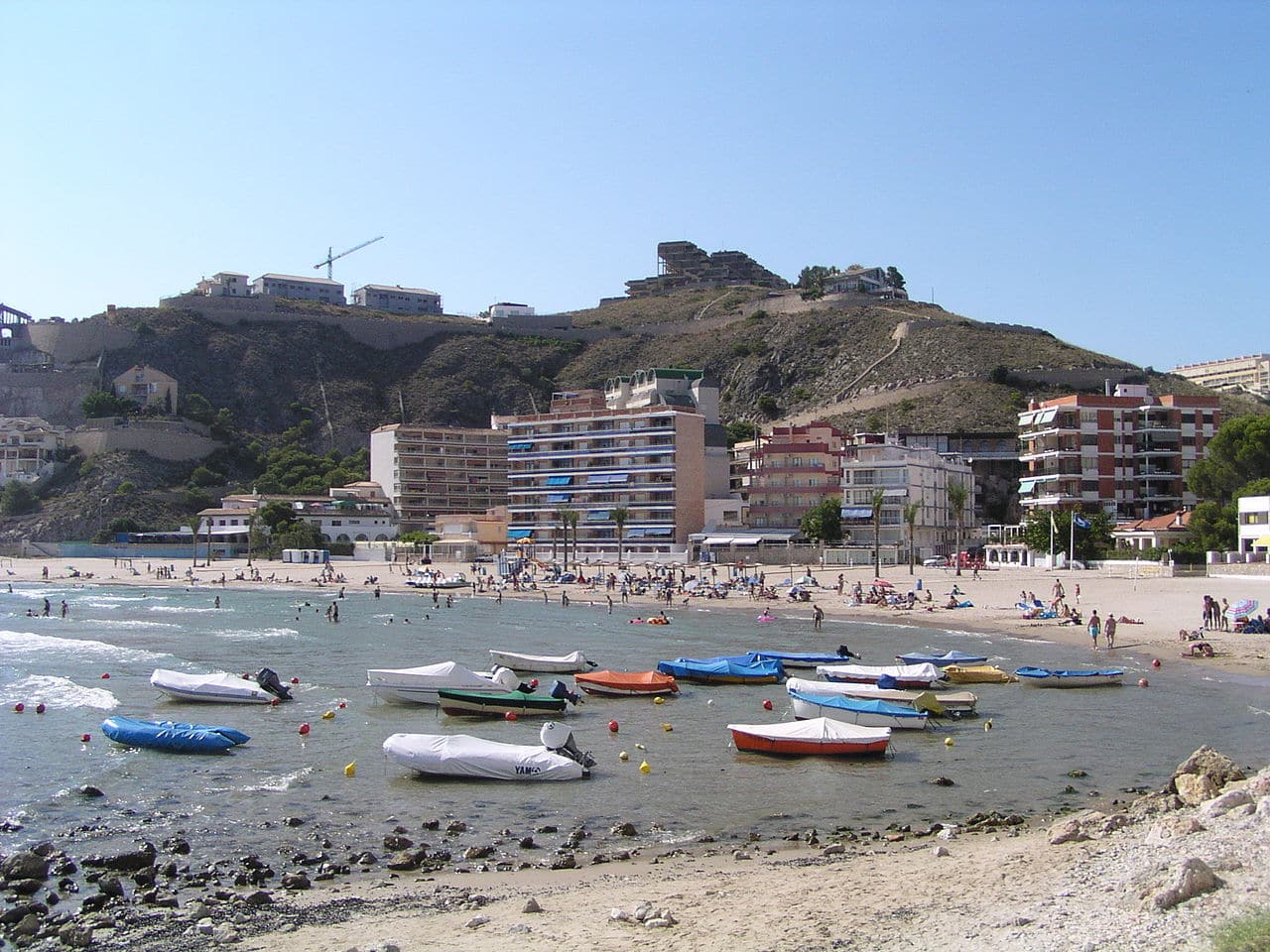
The towns of Valencia with beach They offer you all the charm of coastal towns, with their fishing tradition and their ways of life linked to the sea. But they also have beautiful sandbanks of calm waters in which it is a real pleasure to bathe.
These towns extend from north to south along the Levantine coast between the provinces of Castellón and Alicante and they have a enviable weather all year round. But they offer you much more than coastal tourism, with its animation. They also have an impressive monumental heritage that deserves your visit. For all this, we are going to show you some of the most beautiful towns in Valencia with a beach.
Port of Sagunto
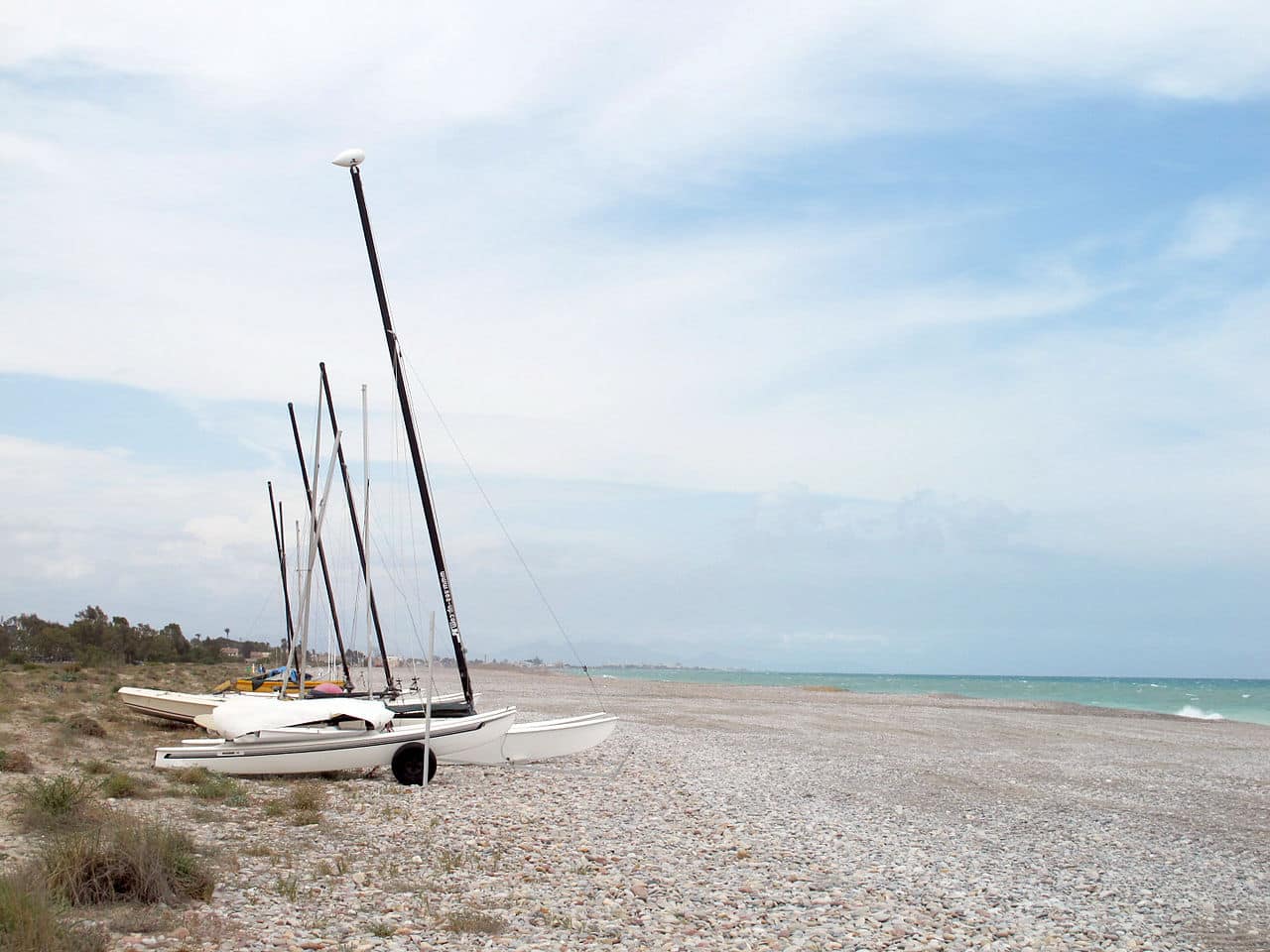
Corinto Malvarrosa beach, in Sagunto
We start our tour at Port of Sagunto, which is distinguished from Sagunto City or historical part, precisely, because the latter is inland, about two and a half kilometers from the coast. It belongs to the region of Murviedro Field, located twenty-five kilometers north of the city of Valencia.
Its main beach, justly called of the Port of Sagunto, is approximately two kilometers long by one hundred and fifty wide. Its sands are fine and the port itself protects it from the winds. Likewise, it is surrounded by dunes and reedbeds. But, what is more important, it has the hallmark of Blue flag and offers you all the services. Next to this, you have in Sagunto the Almardá and Corinto Malvarrosa beaches, both with stone.
On the other hand, if you choose one of them to enjoy a day at the beach, take the opportunity to visit the historic Sagunto. Its origin was the pre-Roman city of Ass, but acquired greater importance in the Latin period. Of this has remained Roman Theatre, dated in the first century after Christ. Another of his symbols is the castle, which contains Iberian, Roman, Gothic and Muslim parts.
Along with these two monuments, we also recommend that you see in Sagunto the Grau Vell or old port, with its XNUMXth century fort; The remains of the fortified farmhouse of Agua Fresca and the Gausa tower mill and historic helmet of the village In the latter you have the Jewish quarter, the old Muslim souk and the Gothic Plaza Mayor. To this same style belongs the House of Mestre Peña and Tithe Palace. also church of Santa Maria is mainly Gothic, while the Hermitages of the Blood and San Roque they are baroque
Puzol
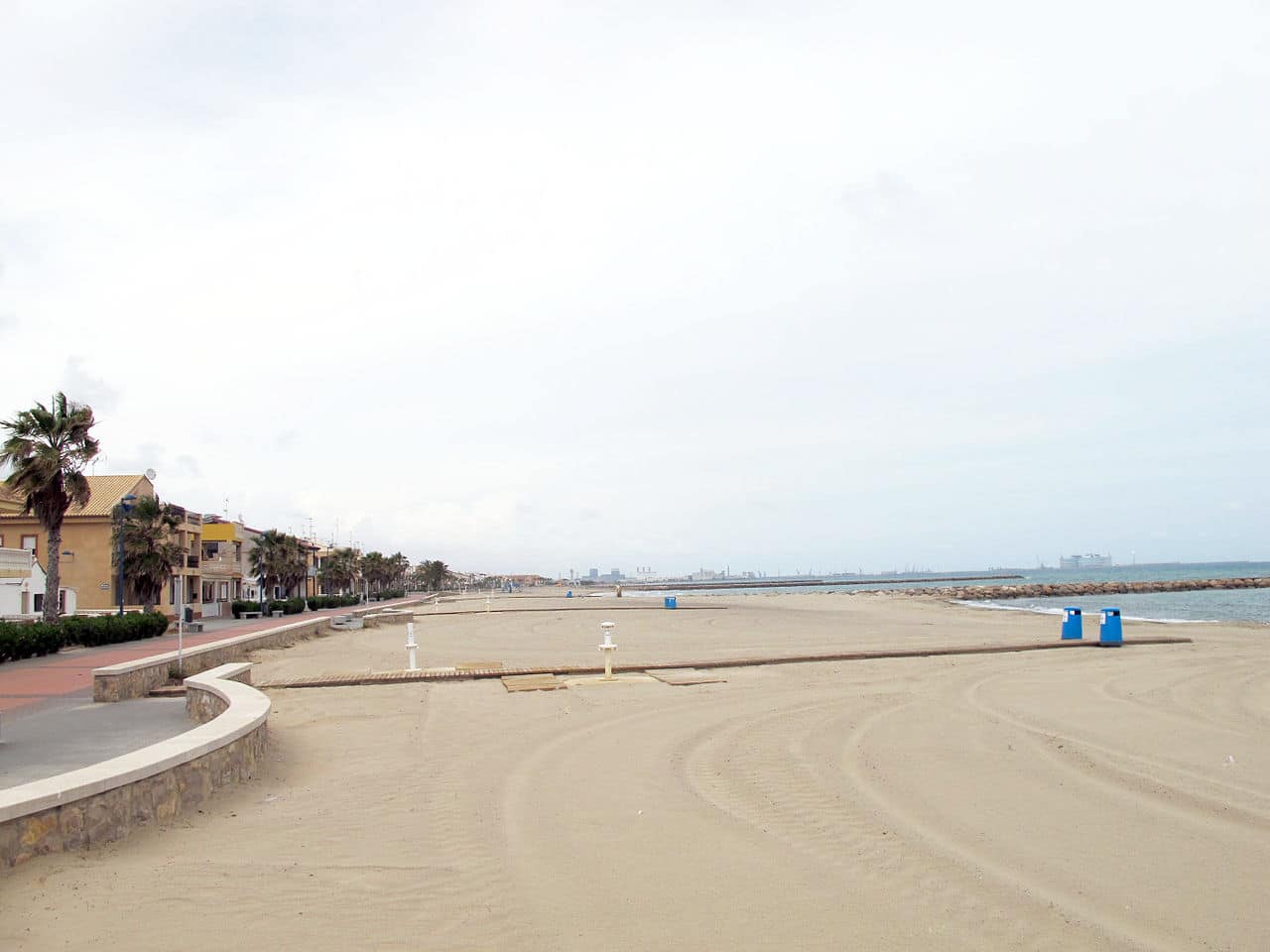
The spectacular beach of Puzol
We go down the Levantine coast to reach Puzol, whose beach is about two kilometers long and sixty wide. It used to be made of stones, but it was transformed into sand a few years ago. Like the previous one, it has Blue flag and offers services such as lifeguards, showers, access for people with reduced mobility and a pedestrian walkway.
But it is not the only natural wonder that this town offers you. Between Puzol and Sagunto you have the Marsh of the Moor, a wetland of great ecological value. And inside is the La Costera natural area, located on the hill of the same name and with abundant vegetation of Mediterranean garrigue, holm oak and carob tree. Similarly, if you like hiking, we recommend the Green Way, which follows the route of an old mining train that linked Calatayud y Valencia, or the Waterway, which passes through the old ditches in the area.
On the other hand, Puzol also offers you monuments. In its old quarter you will find the Turret, a medieval construction for defensive purposes. You should also visit the Church of the Santos Juanes, built at the end of the XNUMXth century and the beginning of the XNUMXth. Inside, you have a very old image of the Virgin Mary and an altarpiece from the XV that represents the Mystery of the Holy Trinity. Next to her, you have the Botanical Garden Wall, Rest of the archiepiscopal palace which, in turn, had one of these gardens where, it is claimed, the peanut was cultivated for the first time in Spain.
On the outskirts of the town, you will find the Windmill, with an Arab structure and located on a hill that offers privileged views of the coast. Finally, the Church of Santa Marta It is a modern and functional temple built in 1964.
Cullera
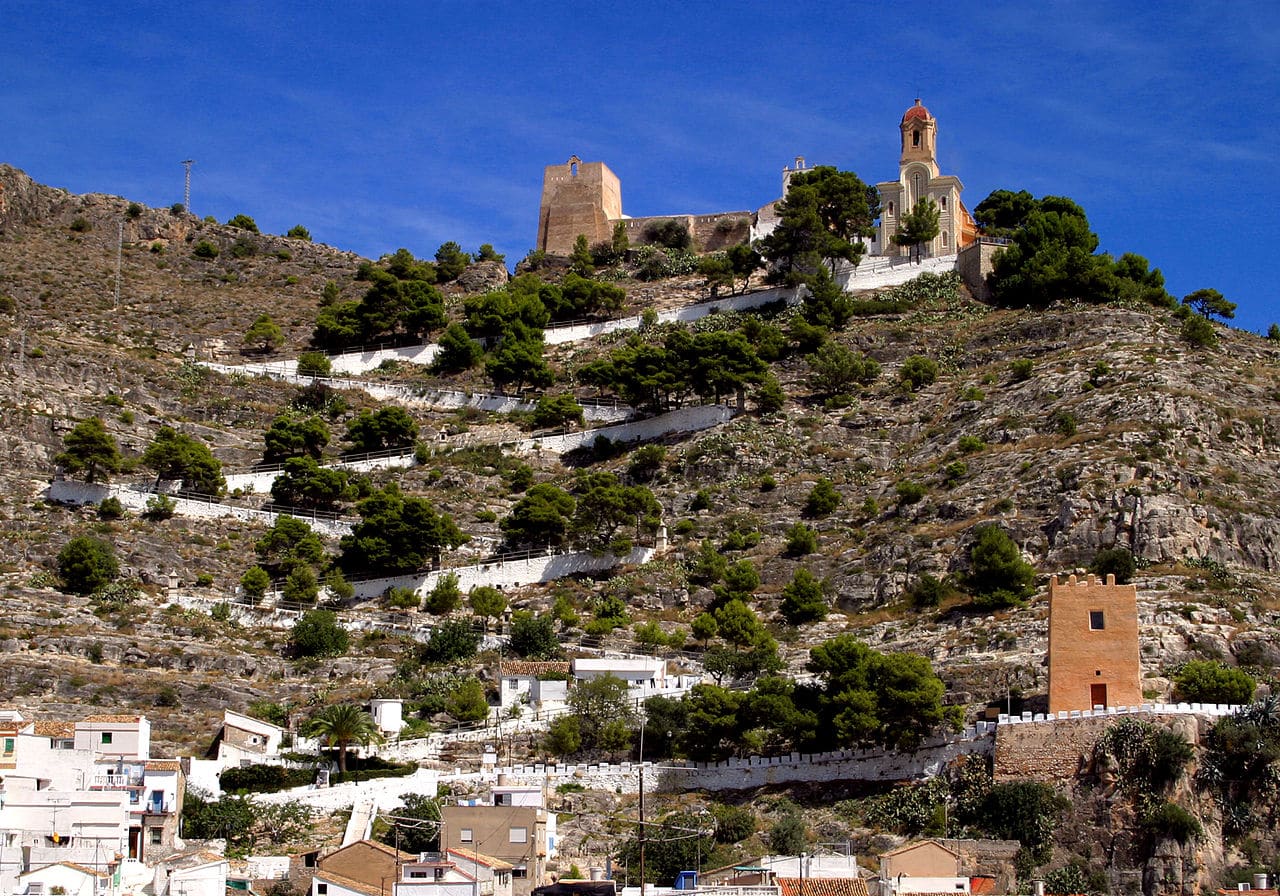
Cullera Castle and Calvario path
We continue our journey through the towns of Valencia with a beach in Cullera, a town located at the mouth of the Júcar river, where a beautiful bay is formed. It belongs to the region of Low Bank and it has several beaches, each one more beautiful. Between them, those of the Dosel, Cabo Blanco, Los Olivos and the Lighthouse.
But perhaps the most famous is San Antonio's, urban type and about two kilometers long. Likewise, it bears the distinction of Blue flag and has all the services. In front of it, in addition, is the small island called Moorish Peneta.
However, Cullera is much more than a beach. Among other natural wonders, the mouth of the Júcar river, which is listed as a Site of Community Interest; the marshes and rice paddies and Estany lagoon, which you can walk along pedestrian paths. Also through hiking trails you can get to know the fox mountain, where you will see springs and archaeological sites.
For its part, regarding the monumental heritage of the Valencian town, its great symbol is the castle, a XNUMXth-century fortress that he had built James I the Conqueror and which is reached by way of Calvary, a via crucis that goes up to the mountain where it is located. Along the way, you also have the Muslim tower of the Moorish Queen, which was one of the gates of the wall that protected the castle. And, once up, you will see the Sanctuary of the Virgen del Castillo, a beautiful neo-Byzantine-style temple from the XNUMXth century.
The tower that we have mentioned to you is located in the neighborhood of the well, which was the Jewish quarter. As for the building Town hall and the call House of Teaching, date from the eighteenth and the Cullera market It is a XNUMXth century modernist. To this same century belongs the lighthouse of the town, which is located in the cape of Cullera, where there was a watchtower and currently you have a viewpoint with spectacular views of the coast. Instead, it keeps that of the Marenyet, on the banks of the Júcar.
As for the religious heritage of this Levantine town, we advise you to visit the Church of the Santos Juanes, a neoclassical temple, and hermitages such as those of Santa Ana, of the Santos de la Piedra, of the Navarrese or of San Vicente Ferrer.
Gandía, the most famous town in Valencia with a beach

Ducal Palace of Gandia
We now arrive at the capital of the region of the Safor, which is the town with a beach in Valencia best known to tourists. However, due to its size, perhaps we should consider it a city, since it has about seventy-five thousand inhabitants. In any case, it has many excellent beaches.
Its beaches cover a total of almost six kilometers and many of them have Blue flag and all services. the biggest is the north, with almost three kilometers and located in front of the promenade. But they are also highly recommended L'Ahuir, with a nudist area; that of rafalcaid, with maritime activities or that of Venice, surrounded by dunes.
As for the monuments of Gandía, its heritage is impressive. It dominates the population from a hill bairen castle. But there are also several farmhouses or old fortified agricultural communities such as those of Peers Tower or of Duc. Likewise, the historic helmet of the town is very beautiful and has several medieval towers such as that of the Pine.
But, perhaps, the most interesting thing about Gandía is the Route of the Borja or Borgia. The town was the cradle of this powerful family and the route has several constructions of its time and before. The most important is the Ducal Palace, a jewel of Valencian Gothic. But also included in this journey is the St. Mark's Hospital, today home to the Archaeological Museum; the Colegiata of Santa Maria, built in the fifteenth century, or the convento of Santa Clara.
Likewise, this route visits monuments from other municipalities such as the Monastery of San Jerónimo de Cotalba, in Alfahuir; the castle-palace of the Milan of Aragon in Albaida; the Játiva collegiate church or the Cathedral of Santa María in the same city Valencia. Finally, the building of the Pious Schools, which dates back to the XNUMXth century and was part of the old University of Gandia, founded by the Duke Francisco de Borja.
Moreover, the church of Santa Maria it is also Gothic and in its construction participated Damien Forment. Bill Town hall It is a neoclassical building and the mansion paris and Great Cinema Royalty They are two jewels of Valencian modernism. The hermitage of Santa Ana, on the hill of the same name, dates from the XNUMXth century and it is where the Song of the Sibyl is performed during Midnight Mass. Finally, the Morabet, which is located on the Algaida road, is a cylindrical tower with two floors.
Olive
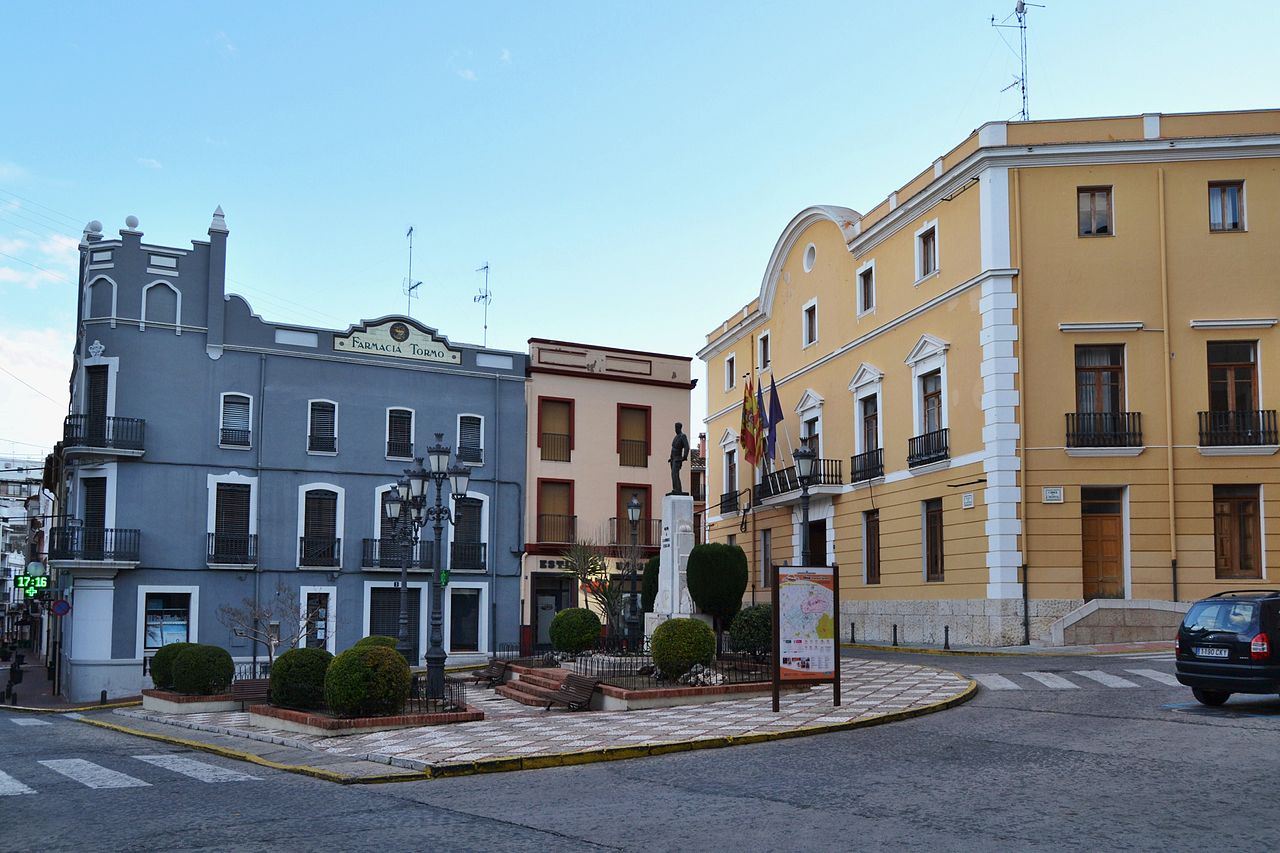
Town Hall Square in Oliva, another of the towns in Valencia with a beach
We end our tour of the towns of Valencia with a beach in Oliva, which is already bordering the province of Alicante. It also has beautiful beaches with fine sand and shallow blue waters. Between them, those of Agua Blanca, Newfoundland, Dead Water or Rabdells. Almost all of them offer you all the services and some also have a distinctive Blue flag. Behind the sandbanks, separated by a chain of dunes, is the Pego-Oliva Marsh Natural Park, a spectacular lagoon. And, further inside, the salty fountain, whose waters maintain a constant temperature throughout the year.
As for the monuments of Oliva, we advise you to visit its historic helmetespecially the old Raval Moorish, which coincides with the surroundings of Calle de la Hoz. It also includes the Tosalet del Doix, a viewpoint that provides wonderful views. Also, we recommend you visit the ruins of the castles of Santa Ana, the Castellar, the Oliva tower and the Centelles palace. Better preserved for being more modern is the Mayan house, which today is a house of culture.
Regarding the religious heritage, the impressive neoclassical church of Santa Maria la Mayor, built in the XNUMXth century on top of an older one, of which a Gothic chapel remains. Instead, the Church of San Roque It's from the XNUMXth and that of San Francisco de Asís, which houses the image of the town's patron saint, from the XNUMXth century. For its part, the Chapel of the Virgin of Rebollet keeps an old Marian carving and the hermitages of San Vicente and San Antonio They date from the eighteenth.
In conclusion, we have shown you the most important towns of Valencia with beach. However, we must not forget the sandbanks of the capital. Among them, the famous beach of MalvarrosaThat of the sands or of the patacona, already in the municipality of Alboraya. Get to know them and tell us about your experience.